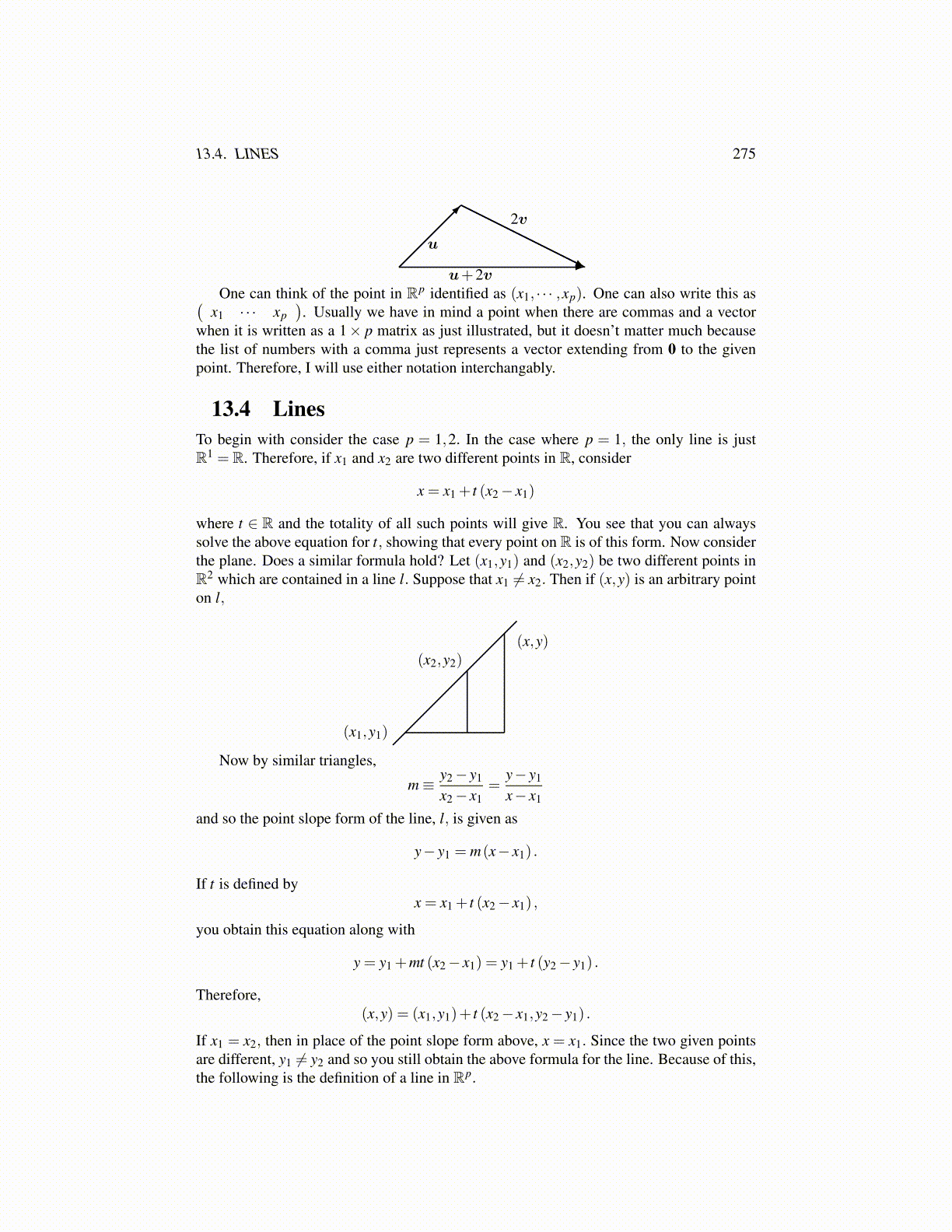
13.4. LINES 275
u
2v
u+2vOne can think of the point in Rp identified as (x1, · · · ,xp). One can also write this as(
x1 · · · xp). Usually we have in mind a point when there are commas and a vector
when it is written as a 1× p matrix as just illustrated, but it doesn’t matter much becausethe list of numbers with a comma just represents a vector extending from 0 to the givenpoint. Therefore, I will use either notation interchangably.
13.4 LinesTo begin with consider the case p = 1,2. In the case where p = 1, the only line is justR1 = R. Therefore, if x1 and x2 are two different points in R, consider
x = x1 + t (x2 − x1)
where t ∈ R and the totality of all such points will give R. You see that you can alwayssolve the above equation for t, showing that every point on R is of this form. Now considerthe plane. Does a similar formula hold? Let (x1,y1) and (x2,y2) be two different points inR2 which are contained in a line l. Suppose that x1 ̸= x2. Then if (x,y) is an arbitrary pointon l,
(x1,y1)
(x2,y2)(x,y)
Now by similar triangles,
m ≡ y2 − y1
x2 − x1=
y− y1
x− x1
and so the point slope form of the line, l, is given as
y− y1 = m(x− x1) .
If t is defined byx = x1 + t (x2 − x1) ,
you obtain this equation along with
y = y1 +mt (x2 − x1) = y1 + t (y2 − y1) .
Therefore,(x,y) = (x1,y1)+ t (x2 − x1,y2 − y1) .
If x1 = x2, then in place of the point slope form above, x = x1. Since the two given pointsare different, y1 ̸= y2 and so you still obtain the above formula for the line. Because of this,the following is the definition of a line in Rp.